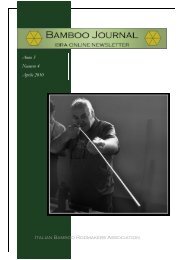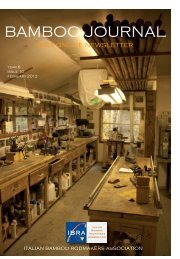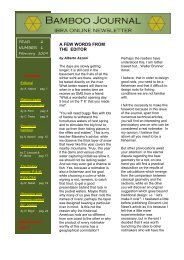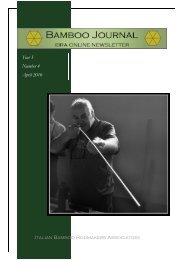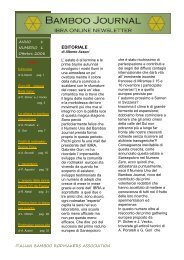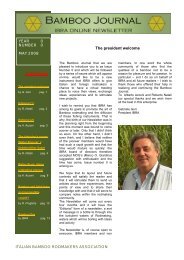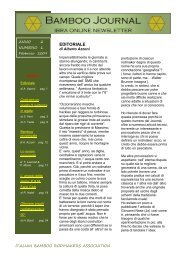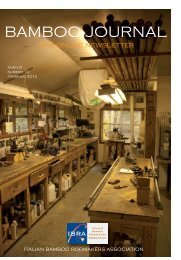Italian Bamboo Rodmakers Association Year 3 Number 5 December ...
Italian Bamboo Rodmakers Association Year 3 Number 5 December ...
Italian Bamboo Rodmakers Association Year 3 Number 5 December ...
You also want an ePaper? Increase the reach of your titles
YUMPU automatically turns print PDFs into web optimized ePapers that Google loves.
Page 50<br />
<strong>Bamboo</strong> Journal<br />
Joiners used their planes continuously and the shop<br />
boys sharpened daily on sandstone honing wheels.<br />
Technology has led to the substitution of planes with<br />
spindle moulders (woodshapers) and hand held<br />
power planers. Manual planes are now only used for<br />
smoothing and other operations on site. A drawback<br />
of this sporadic use at that when put back into use,<br />
the aggressive oxidizing agents on high carbon steel<br />
will have “eaten” away the cutting edge of the blade<br />
making it useless. A solution has been to make the<br />
irons out of stainless steel, but this material is difficult<br />
to keep sharp. It is milder chemical reasons for<br />
this behaviour (for example kitchen knives would<br />
not stay sharp more than two minutes if they were<br />
used on bamboo).<br />
And the rodmaker<br />
<strong>Rodmakers</strong> use the same material as joiners and<br />
they are is confronted with the same problems with<br />
mediocre stainless steel blades.<br />
Every so often, the joiner would take the iron off the<br />
plane to hone it on a wetting stone, put it back on to<br />
continue working. This is one of the operations we<br />
would want to do away with. Taking the iron off and<br />
putting it back in the right position takes time and<br />
often cause blade marks on the surface of the wood<br />
that is being planed. In bamboo the geometry of the<br />
equilateral triangle can be altered. The problem was<br />
solved already at the end of the 1800’s when metal<br />
planes with blade guides and adjusting knobs appeared<br />
that would place the blade back in its original<br />
position.<br />
How does they solve this problem By changing<br />
blades with one that isn’t stainless steel or honing<br />
frequently. The latter solution which is usually acceptable<br />
in the initial phases soon becomes irritating.<br />
There is another issue – the costs and where to<br />
find them. High quality blades are handmade and<br />
made in small quantities and costs round $35 each<br />
and are not easy to find. The price is significantly<br />
indicated in U$D<br />
I will give you a solution or two!!<br />
The irons on the roughing planes:<br />
<strong>Italian</strong> <strong>Bamboo</strong> <strong>Rodmakers</strong> <strong>Association</strong>



